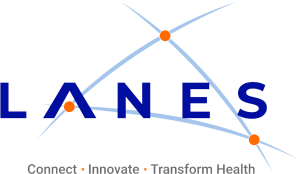As of June 30th this year, ONC’s 21st Century Cures Act Final Rule became effective. The landmark CMS final interoperability rules support access, exchange and use of electronic health information.
The regulations are a giant leap forward to improve patient care coordination and transitions of care. However, COVID-19’s financial toll is beginning to reveal itself. Half of America’s hospitals’ margins are projected to sink to 7 percent by the end of 2020 without additional federal support, jeopardizing community care.
In times of financial crisis, Los Angeles County hospitals, health systems, community clinics and payers must rethink operations, transform their business models ─ and lean on smart technology like LANES. Forced to do more with less, providers can choose to take action leveraging Cal-HOP funds available now to connect their clinicians to the health information exchange to meet final interoperability requirements. Leaving money on the table, so to speak, is not an option.
The pandemic has underscored the national need to invest in true interoperability that ensures the secure and effective transmission of patient data. In L.A. County where huge influxes of COVID-19 caseloads exacerbate the healthcare system, HIE participants benefit from the technology’s ability to fill in the missing gaps of an incomplete medical record to gain a complete picture of a patient’s health. With an HIE, shared data is attainable in light of residents visiting several care facilities that lack the means to transfer data because they operate in silos of fragmented care.
LANES’ current and future provider partners can meet the CMS interoperability criteria and advance care quality by simply accessing its health data exchange. The following is a quick review of two different ways to qualify:
1) Electronic ADT notifications
The Interoperability and Patient Access Rule (CMS-9115-F) requires hospitals with electronic health records to send electronic notifications to the patient’s care team when patients are admitted, discharged, or transferred (ADT) to healthcare facilities or providers.
Specifically, hospitals must send notifications to the patient’s established primary care practitioner, practice group, or entity—or other practitioners, practice groups, or entities identified by the patient as the entity primarily responsible for their care, any post-acute care service provider/agency or other outpatient service providers responsible for the patient’s follow-up or ancillary care, defined as post-acute services providers and suppliers with whom the patient has an established care relationship prior to admission or to whom the patient is being transferred or referred.
Hospitals also must have a solution implemented 12 months after the rule is published in the Federal Register.
Hospitals currently using LANES HIE for notifications will fully meet the CMS conditions of participation requirements. LANES offers a comprehensive, cost-effective solution that ensures hospitals and payers are compliant—without the need for additional intermediary service providers.
2) Interoperability and patient access to health data
It bears repeating that interoperability is defined as technology that enables the secure exchange of electronic health information, allows for complete access, exchange and use, and does not constitute information blocking. Secure, standardized APIs allow for this access without special effort on the part of the clinician or even the payer granting members access to their insurance information. The compliance deadline for the patient access API and provider directory API provisions is January 2021.
The LANES HIE makes patient data requests easy and inexpensive. Participants can take comfort knowing LANES has met federal deadlines for making their data available to third-party developers through standard APIs.
Meet Compliance and Upgrade Care by Leveraging Cal-HOP for LANES
With funds from the Cal-HOP grant, providers and payers can join other Southern California participants who have chosen LANES as their HIE interoperability partner.
Want a conversation?
Contact us to discuss how you can take advantage of the secure exchange of electronic health information through LANES.



